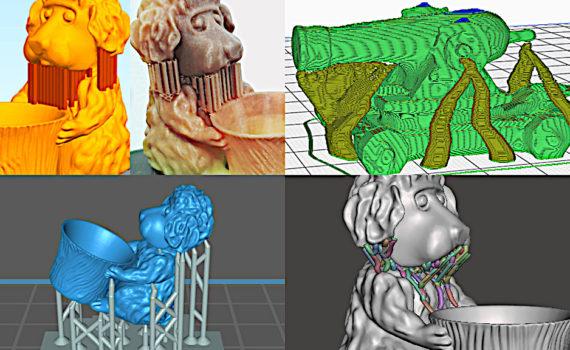
While I could have used that case as a starting point, I wanted this design to be ‘all my own’, so my usage of it stopped there. That is really what prompted me to design my own. But that case has a large clip that rubs right against my ear, and got painful on any call over 30 seconds. In fact my original plan was to print that case and be done with it. I first downloaded and printed this design from Thingiverse. Running it on a Macbook Air probably isn’t the best choice: Not very responsive, pretty chuggy.Then, using the ‘Sketch -> Sketch Dimensions’ tool, create relationships between your sketch and the ‘something else’ based on distance. It appears the workflow goes: Make your sketch ‘somewhere’.
#123d design vs tinkercad how to#
I had a hard time figuring out how to accurately place sketches relative to ‘something else’ (like placing a circle exactly 17mm away from an edge).Filleting the surface (rather than the sketch) seems to be a better call if you later want to change the fillet values. For example, if you need to apply a fillet, you can fillet a sketch (which is then extruded into a surface), or you can fillet the surface after extrusion. It’s better to add features via the Modify & Create menus than the Sketch menu: Modify & Create features are added as history to the timeline, while making changes to a sketch aren’t recorded in history.I discuss the bug, and the solution on the forums here. If you want to project an existing sketch onto another surface, it looks like there’s a bug on the mac.

#123d design vs tinkercad software#
123D vs Other Platformsġ23D is a free software mainly targeted towards beginners or users with some basic CAD experience. Simply enter the dimensions of your 3D printerâs plate and youâre good to go. However, before exporting, remember to convert it back to millimeters! Edit gridĮdit Grid allows you to set the grid size to match your 3D printer. If you want to use inches, you can by adjusting the unit. Otherwise, you could end up making a huge error.

Knowing this, be careful when drawing custom designs. UnitsģD printers use millimeters as the default unit for measurements. If required, the user can turn it off and drag the object randomly around the grid. Snap decides the intervals that an object can be moved/rotated on the grid. After selecting the primitive from the menu, you much first input the dimensions of the object and then the object can be dropped on the grid. One cool aspect of primitives is that users can adjust their size. Primitives are pre-made 3D models that users can start a design with, but they are limited.

Meshmixer and 123D Make are both handy tools I use to check my model before exporting it to my 3D printer. I only work with STL but highly recommended that users figure out their 3D printerâs requirements and choose the appropriate format based on that. With Import, users can import a 3D model or a sketch/2D image in SVG format and then extrude this sketch to 3D.Įxporting as a 3D model provides four format options: STL, SAT, X3D, and VRML. 123Dx extension, which means these files can only open in 123D. Note: Files saved to your computer are saved with a. The tabs shown by the green arrow are Undo (ctrl+Z) and Redo (ctrl+Y) and come in very handy when designing a model.


 0 kommentar(er)
0 kommentar(er)
